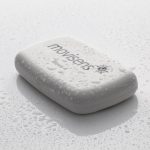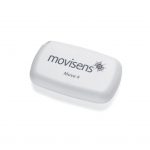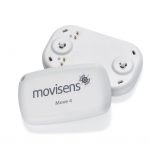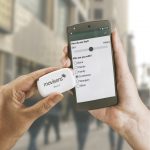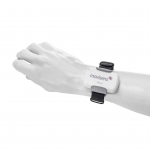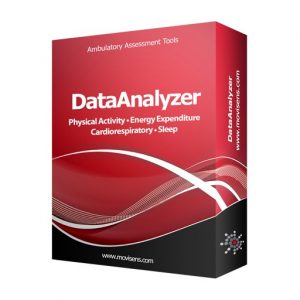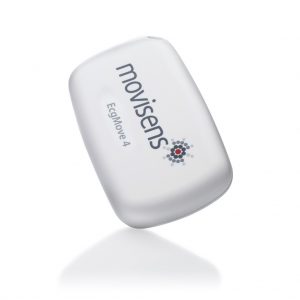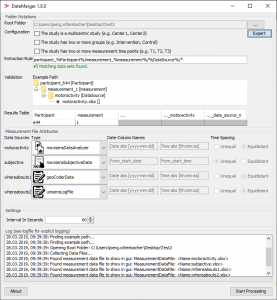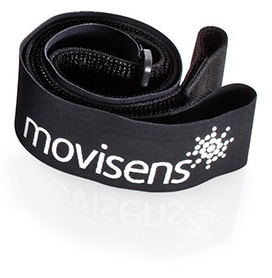Move 4 – Capteur d'Activité
Faisant partie intégrante de la nouvelle génération de capteurs, le Move 4combine les avantages déjà établis par son prédécesseur le Move 3 et les améliorations de la quatrième génération, nous permettant de satisfaire une grande variété des besoins des chercheurs, de mettre en œuvre leurs demandes, et d’améliorer la qualité des capteurs. Ainsi, le Move 4 renforce sa position comme étant le meilleur pour les chercheurs en quête de qualité pour leurs données.
La quatrième génération de capteurs propose aux chercheurs de nombreux avantages incluant :
- Un nouveau design pour une utilisation optimale : L’amélioration du boitier offre un design esthétique plus lisse et permet de nombreux avantages pratiques. La résistance à l’eau et à la poussière couplée à l’amélioration du système de port rendent les capteurs plus simples, plus versatiles et plus sécurisés.
- Une capacité de collecte des données plus grande : grâce à l’intégration des nouvelles technologies, la quatrième génération de capteurs a dorénavant incorporé un Gyroscope (un Capteur de Vitesse Angulaire).
- Une amélioration des possibilités d’analyse : Notre très renommé capteur d’accélération a également été révisé, et mesure à présent les données à un niveau de résolution plus haut. En conséquence, nous avons réalisé des améliorations significatives des résultats auxquels nous pouvons prétendre, surtout dans l’analyse du comportement sédentaire et la détectionde non usage.
- Une augmentation de la conservation des données : un nouveau tampon Bluetooth assure une préservation des données durant la déconnexion avec les données mises en tampon et transférées dès la reconnexion ; cela garanti ainsi un enregistrement des données à n’importe quel moment.
- Une application du domaine de la recherche : déjà leader dans la qualité de l’acquisition des données dans de nombreux secteurs de la recherche, ces améliorations accroissent les capacités de recherche du Move 4Pendant ce temps il reste le meilleur choix pour les chercheurs exigeant des données sur l’activité physique de haute qualité.
Le Move 4suit le Move 3 comme étant le capteur mobile le plus précis pour l’acquisition de l’activité physique. Exécutant des calculs complexes et faisant une analyse détaillée des paramètres de mouvements et de comportements cela n’a jamais été aussi simple. À travers la sauvegarde continuelle des données jusqu’à 4 semaines (accéléromètre 3D, Gyroscope, pression barométrique de l’air et de la température), le Move 4 offre un riche panel d’informations sur les données pour des analyses supplémentaires.
Des paramètres comme le taux d’activité, la position du corps, les pas, la dépense énergétique et les équivalents métaboliques peuvent être simplement calculés par le logiciel d’Analyse DataAnalyzer de movisens, dans un intervalle de sortie sélectionnable.
Pendant que sont sauvegardés les flux de données brutes, le capteur peut également analyser certains de ses autres paramètres et transmettre les résultats via l’interface Bluetooth Smart, par exemple à un smartphone. Le capteur est optimisé pour être utilisé dans les recherches scientifiques et pour une évaluation ambulatoire interactive. Le nouveau système de port vous offre une importante flexibilité ainsi qu’un grand confort d’utilisation. Cela mène à l’amélioration de la conformité, une qualité des données meilleure et cela réduit les efforts de la réalisation d’une étude et entraine un coût moins important.
Principales caractéristiques
- Nouveau Design avec nouveau système de port et résistance à l’eau
- Système d’acquisition des données perfectionné grâce à l’apport d’un Gyroscope
- Nouveau capteur d’accélération avec une plus grande résolution
- Analyse des données de capteurs en ligne
- Un meilleur transfert des donnés via l’Interface Bluetooth Smart
- Une détection exacte et validée de vos activités quotidiennes
- Une détection exacte de vos dépenses énergétiques
- Une détection optimisée du non usage
- Java API pour USB (Windows)
- API: Example implementation pour Bluetooth Smart (Android)
Applications
- Évaluation ambulatoire interactive
- Détection du comportement sédentaire
- Monitorage de l’activité
- Monitorage comportemental
- Calcul de la dépense énergétique
- Détection du pas
- Détection de la position du corps
Produits et services adaptés

SensorTrigger
movisensXS-Feature pour Évaluation interactive
Echantillonnage de l'expérience basée sur Smartphone
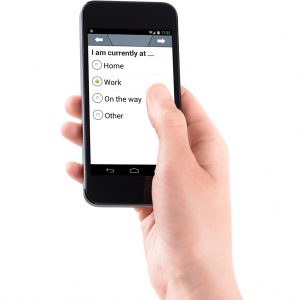
movisensXS
Echantillonnage de l'expérience plateforme
Solution d'échantillonnage de l'expérience basée sur un smartphone
Téléchargements
| Newsletter |
|
|---|---|
| Logiciel |
|
| Documentation |
|
| Outils externes |
Fiche technique
| Power supply | Lithium-Polymer-Battery |
| Battery voltage | 3,7 V |
| Number of charging cycles | 300 (with 1 C / 1 C > 80%) |
| Internal memory | 4 GB |
| Maximum recording capacity | 4 weeks |
| Battery run time | ~ 7 days |
| Recharging time | ~ 1 hour |
| Size of sensor (W x H x D) | 62,3 mm x 38,6 mm x 11,5 mm |
| Weight of sensor | 25 g |
| Protection rate | Waterproof (IP64) |
| Internal sensors | 3D acceleration sensor: Measurement range: +/- 16 g Output rate: 64 Hz
Rotation rate sensor: Measurement range: +/-2000dps Resolution: 70 mdps Output rate: 64 Hz
Pressure sensor: Measurement range: 300 - 1100 hPa Noise: 0,03 hPa Output rate: 8 Hz
Temperature sensor: Output rate: 1 Hz |
| Live analysis | Movement Acceleration Step count |
| Indicators | LED, 3-color Vibration alarm |
| User Interfaces | Marker (tapping) |
| Interfaces | Micro-USB, Bluetooth Smart (4.0) |
| API | Java API for USB (Windows) Example for Bluetooth Smart (Android) |
| Wear locations | Hip, Chest, Wrist, Upper Arm, Ankle, Thigh |
| Wearing systems | Wrist Band, Belt Adapter and Belt |
| Environmental conditions | Temperature: -20 °C to 60 °C 0 °C to 45 °C during charging Atmospheric pressure: 300 to 1200 hPa absolute |
| Warranty | 2 years |
Littérature et validation
- Impact of a Semi-Rigid Knee Orthotic Intervention on Pain, Physical Activity, and Functional Capacity in Patients with Medial Knee Osteoarthritis.
- Psychomotor Slowing in Psychosis and Inhibitory Repetitive Transcranial Magnetic Stimulation.
- Exploring the Link between Lifestyle, Inflammation, and Insulin Resistance through an Improved Healthy Living Index.
- Development of a Machine Learning Model to Detect Freezing of Gait in Parkinson Patients.
- Determination of cut-off points for the Move4 accelerometer in children aged 8–13 years.
- Momentary within-subject associations of affective states and physical behavior are moderated by weather conditions in real life: an ambulatory assessment study.
- Microtemporal Dynamics of Dietary Intake, Physical Activity, and Impulsivity in Adult Attention-Deficit/Hyperactivity Disorder: Ecological Momentary Assessment Study Within Nutritional Psychiatry.
- Ecological Momentary Assessment in Nutritional Psychiatry: Microtemporal Dynamics of Dietary Intake, Physical Activity, and Impulsivity in Adult ADHD.
- Momentary associations between sedentary bouts, cognitive load and mood in daily life: An ambulatory assessment study.
- The Work Lifestyle-integrated Functional Exercise Program for Preventing Functional Decline in Employees over 55 years: Development and Initial Evaluation.
- Multicentre, interventional, single-arm study protocol of telemonitored circadian rhythms and patient-reported outcomes for improving mFOLFIRINOX safety in patients with pancreatic cancer.
- Microstructural white matter biomarkers of symptom severity and therapy outcome in catatonia: Rationale, study design and preliminary clinical data of the whiteCAT study.
- Combined physical activity training versus aerobic activity training in unipolar depressive disorder: a quasi-randomised evaluation study.
- At Crossroads in a Virtual City: Effect of Spatial Disorientation on Gait Variability and Psychophysiological Response among Healthy Older Adults.
- The 8th International Conference on Ambulatory Monitoring of Physical Activity and Movement: Active and Sitting Time Precursors to Mood in Young Adults.
- Effects of strength exercise interventions on activities of daily living, motor performance, and physical activity in children and adolescents with leukemia or non-Hodgkin lymphoma: Results from the randomized controlled ActiveADL Study.
- Effectiveness of an evidence-based care pathway to improve mobility and participation in older patients with vertigo and balance disorders in primary care (MobilE-PHY2): Study protocol for a multicentre cluster-randomised controlled trial.
- The Behavioral Mapping of Psychomotor Slowing in Psychosis Demonstrates Heterogeneity Among Patients Suggesting Distinct Pathobiology.
- Measuring catatonia motor behavior with objective instrumentation.
- Mood-enhancing Physical Activity in Individuals with Attention-Deficit/Hyperactivity Disorder (ADHD) and Healthy Youths – Daily Life Investigations by Ambulatory Assessment.
- A temporal classification method based on behavior time series data in patients with behavioral variant of frontotemporal dementia and apathy.
- The association of stress and physical activity: Mind the ecological fallacy.
- Influence of Sit-Stand Tables in Classrooms on Children’s Sedentary Behavior and Teacher’s Acceptance and Feasibility: A Mixed-Methods Study.
- Sleep quality, valence, energetic arousal, and calmness as predictors of device-based measured physical activity during a three-week mHealth intervention.
- Equivalency of four research-grade movement sensors to assess movement behaviors and its implications for population surveillance.
- Analysis of self-reported activities of daily living, motor performance and physical activity among children and adolescents with cancer: Baseline data from a randomised controlled trial assessed shortly after diagnosis of leukaemia or non-Hodgkin lymphoma.
- Functional connectivity correlates of reduced goal-directed behaviorsin behavioural variant frontotemporal dementia.
- Actigraph-Measured Movement Correlates of Attention-Deficit/Hyperactivity Disorder (ADHD) Symptoms in Young People with Tuberous Sclerosis Complex (TSC) with and without Intellectual Disability and Autism Spectrum Disorder (ASD).
- Accuracy of Sedentary Behavior–Triggered Ecological Momentary Assessment for Collecting Contextual Information: Development and Feasibility Study.
- Mood and dysfunctional cognitions constitute within - subject antecedents and consequences of exercise in eating disorders.
- OREBA: A Dataset for Objectively Recognizing Eating Behaviour and Associated Intake.
- Improving mobility and participation of older people with vertigo, dizziness and balance disorders in primary care using a care pathway: feasibility study and process evaluation.
- Fear of Physical Activity, Anxiety, and Depression. Barriers to Physical Activity in Outpatients With Heart Failure?.
- The Freiburg sport therapy program for eating disorders: a randomized controlled trial.
- A neural mechanism for affective well-being: Subgenual
cingulate cortex mediates real-life effects
of nonexercise activity on energy. - Development of a classification system for assessing apathy’s degree in patients with behavioral variant of frontotemporal dementia.
- Validating Accelerometers for the Assessment of Body Position and Sedentary Behavior.
- Breaking Up Sedentary Behavior Optimally to Enhance Mood.
- Real-Time Detection of Spatial Disorientation in Persons with Mild Cognitive Impairment and Dementia.
- Dynamics of Intraindividual Variability in Everyday Life Affect Across
Adulthood and Old Age. - Embodied learning in the classroom: Effects on primary school children's attention and foreign language vocabulary learning.
- Neural correlates of individual differences in affective benefit of real-life urban green space exposure.
- Using Acceleration Data for Detecting Temporary Cognitive Overload in Health Care Exemplified Shown in a Pill Sorting Task.
- Sedentary behavior in everyday life relates negatively to mood: An ambulatory Assessment study.
- Promotion of physical activity-related health competence in physical education: study protocol for the GEKOS cluster randomized controlled trial.
- Energy Expenditure During Incline Walking – Benefits of Integrating a Barometer into Activity Monitors.
- Individual Differences in the Competence for Physical-Activity-Related Affect Regulation Moderate the Activity–Affect Association in Real-Life Situations.
- Intermittent Fasting (Alternate Day Fasting) in Healthy, Non-obese Adults: Protocol for a Cohort Trial with an Embedded Randomized Controlled Pilot Trial.
- Bright light therapy versus physical exercise to prevent co-morbid depression and obesity in adolescents and young adults with attention-deficit / hyperactivity disorder: study protocol for a randomized controlled trial.
- A novel algorithm for detecting human circadian rhythms using a thoracic temperature sensor Article history :.
- Physical Activity and Depressive Mood in the Daily Life of Older Adults.
- Measuring Fear of Physical Activity in Patients with Heart Failure.
- Lightweight Visual Data Analysis on Mobile Devices - Providing Self-Monitoring Feedback.
- Contributions à l’élaboration d’un système d’aide médico-sociale à l’aide d’un robot humanoïde.
- Situationsadaptive Navigationsassistenz für Menschen mit Demenz.
- Real-Time Management of Multimodal Streaming Data for Monitoring of Epileptic Patients.
- Bewegungsangst bei chronischer Herzinsuffizienz – Erste Ergebnisse zur Validierung eines Messinstruments.
- Fitness, kognitive Leistungsfähigkeit und Wohlbefinden bei jungen Erwachsenen - Interventionsstudien zum Einfluss von Ausdauertraining.
- Validation and comparison of two methods to assess human energy expenditure during free-living activities.
- Erfassung körperlicher Aktivität mittels Akzelerometrie - Möglichkeiten und Grenzen aus technischer Sicht.
- Home-based system for physical activity monitoring in patients with multiple sclerosis (Pilot study).
- Detection of Parameters to Quantify Neurobehavioral Alteration in Multiple Sclerosis Based on Daily Life Physical Activity and Gait Using Ambulatory Assessment.
- Using Support Vector Regression for Assessing Human Energy Expenditure Using a Triaxial Accelerometer and a Barometer.
- A Comparison of Two Commercial Activity Monitors for Measuring Step Counts During Different Everyday Life Walking Activities.
- The Association between Short Periods of Everyday Life Activities and Affective States: A Replication Study Using Ambulatory Assessment.
- Characteristics of the activity-affect association in inactive people: an ambulatory assessment study in daily life.
- Acute and medium term effects of a 10-week running intervention on mood state in apprentices.
- Measurement of daily mobility under fampridine-therapy with Movisens-system in patients with multiple sclerosis.
- Kindergarten in Bewegung. Zur Qualität von Bewegungskindergärten.
- Assessment der Mobilität im Alltag zur Unterstützung von MS-Patienten.
- Assessment of Human Gait Speed and Energy Expenditure Using a Single Triaxial Accelerometer.
- Aktuelle Messverfahren zur objektiven Erfassung körperlicher Aktivitäten unter besonderer Berücksichtigung der Schrittzahlmessung.
- A new method to estimate energy expenditure using accelerometry and barometry-based energy models.
- Validity of the kmsMove-sensor in calculating energy expenditure during different walking intensities.
- Estimation of energy expenditure using accelerometers and activity-based energy models - validation of a new device.
- Trends und Möglichkeiten zur Erfassung körperlicher Aktivität im Alltag.
- Bewegungskindergärten: empirische Befunde und praktisches Wissen.
- Energieumsatzmessung mit Aktivitätssensoren – Validität des kmsMove-Akzelerometers.
- Einsatz sensorgestützter Verfahren im Gesundheitswesen: Herausforderungen und Lösungsansätze.
Vous trouverez plus de publications ici.

